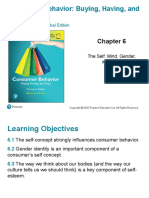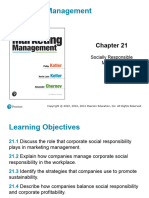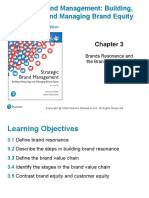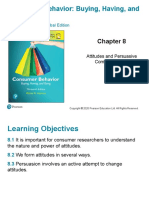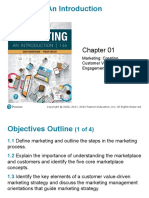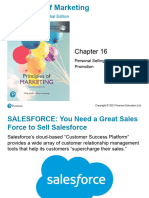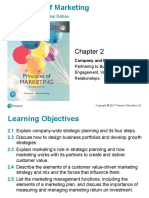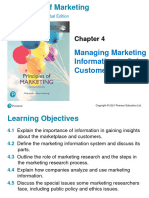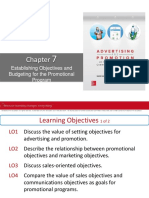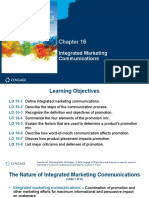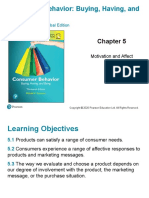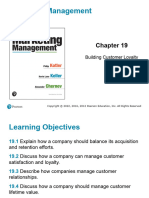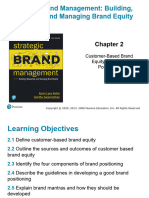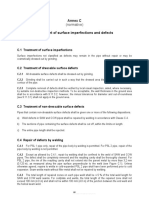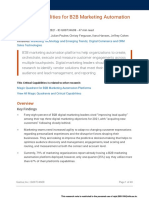0 ratings0% found this document useful (0 votes)
99 viewsKeller SBM5e Accessible CH09
Keller SBM5e Accessible CH09
Uploaded by
Vương Trần Cao PhướcCopyright:
© All Rights Reserved
Available Formats
Download as PPTX, PDF, TXT or read online from Scribd
Keller SBM5e Accessible CH09
Keller SBM5e Accessible CH09
Uploaded by
Vương Trần Cao Phước0 ratings0% found this document useful (0 votes)
99 views25 pagesCopyright
© © All Rights Reserved
Available Formats
PPTX, PDF, TXT or read online from Scribd
Share this document
Did you find this document useful?
Is this content inappropriate?
Copyright:
© All Rights Reserved
Available Formats
Download as PPTX, PDF, TXT or read online from Scribd
Download as pptx, pdf, or txt
0 ratings0% found this document useful (0 votes)
99 views25 pagesKeller SBM5e Accessible CH09
Keller SBM5e Accessible CH09
Uploaded by
Vương Trần Cao PhướcCopyright:
© All Rights Reserved
Available Formats
Download as PPTX, PDF, TXT or read online from Scribd
Download as pptx, pdf, or txt
You are on page 1of 25
Strategic Brand Management: Building,
Measuring, and Managing Brand Equity
Fifth Edition, Global Edition
Chapter 9
Developing a Brand
Equity Measurement and
Management System
Copyright © 2020 Pearson Education Ltd. All Rights Reserved
Learning Objectives
9.1 Describe the new accountability in terms of ROMI
(Return on Marketing Investment)
9.2 Create an understanding of analytics dashboards as a
tool for monitoring performance and the implications of
brand investments
9.3 Outline the two main steps in conducting a brand audit
and how to execute a digital marketing review
9.4 Describe how to design, conduct, and interpret a
tracking study
9.5 Identify the steps in implementing a brand equity
management system
Copyright © 2020 Pearson Education Ltd. All Rights Reserved
The New Accountability
• Virtually every marketing dollar spent today must be
justified as both effective and efficient in terms of
– Return on marketing investment (ROMI)
• Increased accountability
– Has forced marketers to address tough challenges
▪ Develop new measurement approaches
Copyright © 2020 Pearson Education Ltd. All Rights Reserved
Conducting Brand Audits (1 of 2)
• Marketing audit
– Independent examination of a company’s marketing
environment, objectives, strategies, and activities
▪ Agreement on objectives, scope, and approach
▪ Data collection
▪ Report preparation and presentation
Copyright © 2020 Pearson Education Ltd. All Rights Reserved
Conducting Brand Audits (1 of 2)
• Brand audit
– Comprehensive examination of a brand to discover its
sources of brand equity
– Consists of two steps
1. Brand inventory
2. Brand exploratory
Copyright © 2020 Pearson Education Ltd. All Rights Reserved
Brand Inventory (1 of 2)
• Purpose of the brand inventory
– Provide a current, comprehensive profile of how all
products and services are marketed and branded
• Profiling each product or service requires marketers to
catalogue in both visual and written form:
– The brand elements
– The inherent product attributes or characteristics of the
brand
– Pricing, communications, and distribution policies
– Relevant marketing activity
Copyright © 2020 Pearson Education Ltd. All Rights Reserved
Brand Inventory (2 of 2)
• A digital inventory of brand assets may provide useful
insights:
1. Outdated brand accounts that have fallen into disuse
2. Overlapping brand assets which can be merged or
deleted
3. Existing brand accounts with information that is either
inaccurate or not up-to-date
4. Particular digital and social media channels where the
brand does not have a presence
Copyright © 2020 Pearson Education Ltd. All Rights Reserved
Brand Exploratory (1 of 3)
• Second step of the brand audit
• Provides detailed information about what consumers
actually think of a brand
– Research directed to understanding what consumers:
▪ Think and feel about a brand
▪ Act toward it
– Helps identify sources of brand equity and possible
barriers
Copyright © 2020 Pearson Education Ltd. All Rights Reserved
Figure 9-2: Summary of Qualitative
Techniques
Free association Day/Behavior reconstruction
Adjective ratings and checklists Photo/Written journal
Confessional interviews Participatory design
Projective techniques Consumer-led problem solving
Photo sorts Real-life experimenting
Archetypal research Collaging and drawing
Bubble drawings Consumer shadowing
Story telling Consumer–product interaction
Personification exercises Video observation
Role playing *ZMET trademark
Metaphor elicitation*
Copyright © 2020 Pearson Education Ltd. All Rights Reserved
Brand Exploratory (2 of 3)
• Three criteria to judge qualitative research techniques:
– Direction
– Depth
– Diversity
Copyright © 2020 Pearson Education Ltd. All Rights Reserved
Figure 9-3A: Classic MTV Mental Map
Copyright © 2020 Pearson Education Ltd. All Rights Reserved
Brand Exploratory (3 of 3)
• Digital marketing review
– Can provide important input to a brand audit
▪ Could help generate useful insights regarding a
brand’s online presence
• Offers:
– Brand’s digital efforts are received in online channels
– Important customer-level insights and industry trends
– Useful input to brand strategy development
– Health check of a brand’s digital marketing and social
media strategy
Copyright © 2020 Pearson Education Ltd. All Rights Reserved
Brand Positioning and the Supporting
Marketing Program
• Ideal brand positioning aims to achieve congruence
between:
– What customers currently believe about the brand
– What customers will value in the brand
– What the firm is currently saying about the brand
– Where the firm would like to take the brand
Copyright © 2020 Pearson Education Ltd. All Rights Reserved
Figure 9-5: John Roberts’s Brand
Positioning Considerations
Copyright © 2020 Pearson Education Ltd. All Rights Reserved
Designing Brand Tracking Studies
• Brand tracking studies
– Collect information from consumers
▪ On a routine basis
▪ Usually quantitative
– On a number of key dimensions that marketers
can identify in the brand audit
– With brand extensions or additional communication
methods
▪ Becomes difficult and expensive to research
▪ Yet necessary
Copyright © 2020 Pearson Education Ltd. All Rights Reserved
What to Track
• Product-Brand Tracking
– May want to first ask consumers what brands come to
mind
– Next ask for recall of brands
– Then tests of brand recognition
• Corporate or Family Brand Tracking
– May want to track corporation or family brand
separately or concurrently with individual products
• Global Tracking
– May need a broader set of background measure for
global tracking
Copyright © 2020 Pearson Education Ltd. All Rights Reserved
Figure 9-6: Brand Context
Measures (1 of 2)
Economic Indicators Phones
Gross domestic product P DA
Interest rates Microwaves
Unemployment Television
Average wage Personal Attitudes and Values
Disposable income Confidence
Home ownership and housing debt Security
Exchange rates, share markets, and Family
balance of payments Environment
Retail Traditional values
Total spent in supermarkets Foreigners v s sovereignty
er us
Change year to year Media Indicators
Growth in house brand Media consumption: total time spent
Technology watching TV, consuming other media
Computer at home Advertising expenditure: total, by
DVR media and by product category
Access to and use of Internet Demographic Profile
Population profile: age, sex, income,
household size
Copyright © 2020 Pearson Education Ltd. All Rights Reserved
Figure 9-6: Brand Context
Measures (2 of 2)
Geographic distribution
Ethnic and cultural profile
Other Products and Services
Transport: own car—how many
Best description of car Motorbike
Home ownership or renting
Domestic trips overnight in last year
International trips in last two years
Attitude to Brands and Shopping
Buy on price
Like to buy new things
Country of origin or manufacture
Prefer to buy things that have been
advertised
Importance of familiar brands
Copyright © 2020 Pearson Education Ltd. All Rights Reserved
Big Data and Marketing Analytic
Dashboards
• Troves of data exist
– Can enable continuous tracking of customers
• Marketing analytic dashboard
– Systems and processes within an organization to
communicate important metrics
▪ And make them available throughout an
organization
Copyright © 2020 Pearson Education Ltd. All Rights Reserved
Establishing a Brand Equity
Management System
• Brand Charter or Bible
• Brand Equity Report
• Brand Equity Responsibilities
Copyright © 2020 Pearson Education Ltd. All Rights Reserved
Brand Charter or Bible
• First step in establishing a brand equity management
system
– Formalizes the company view of brand equity into a
document
• Brand charter (or brand bible as sometimes called)
– Provides relevant guidelines to marketing managers
and key marketing partners
– Should be updated annually
Copyright © 2020 Pearson Education Ltd. All Rights Reserved
Brand Equity Report
• Second step in establishing a successful brand equity
management system
– Assemble results of the tracking survey and other relevant
performance measure for the brand
– Create a brand equity report or scorecard
▪ Distribute to management regularly
– Contents
▪ A brand equity report should describe:
– What is happening with the brand?
– Why is it happening?
– Should include more descriptive market-level information
Copyright © 2020 Pearson Education Ltd. All Rights Reserved
Copyright © 2020 Pearson Education Ltd. All Rights Reserved
Brand Equity Responsibilities (1 of 2)
• Third step in establishing a successful brand equity
management system
– Clearly define organization responsibilities and
processes
▪ With respect to the brand
Copyright © 2020 Pearson Education Ltd. All Rights Reserved
Brand Equity Responsibilities (2 of 2)
• Overseeing Brand Equity
• Organizational Design and Structures
• Managing Marketing Partners
Copyright © 2020 Pearson Education Ltd. All Rights Reserved
You might also like
- Chapter 1Document36 pagesChapter 1kertenholmes666100% (3)
- Chapter 3Document34 pagesChapter 3tranm21410ca100% (1)
- Solomon CB13 PPT 06 accessiblePPTDocument31 pagesSolomon CB13 PPT 06 accessiblePPTZanete Garanti100% (1)
- Chapter 21Document17 pagesChapter 21huyenltk21410caNo ratings yet
- Keller SBM5e Accessible CH15Document20 pagesKeller SBM5e Accessible CH15Pham Le Tram Anh (K16HCM)No ratings yet
- Keller SBM5e Accessible CH04Document29 pagesKeller SBM5e Accessible CH04Vương Trần Cao PhướcNo ratings yet
- Pride FoM 9e PPT CH01 Final InstructorDocument50 pagesPride FoM 9e PPT CH01 Final InstructorTijana Djurdjevic100% (1)
- CH # 12, Marketing Channels - Delivering Customer ValueDocument41 pagesCH # 12, Marketing Channels - Delivering Customer ValueSaad MunirNo ratings yet
- Keller SBM5e Accessible CH02Document36 pagesKeller SBM5e Accessible CH02Lai Wing KaNo ratings yet
- Keller SBM5e Accessible CH03Document37 pagesKeller SBM5e Accessible CH03Vương Trần Cao PhướcNo ratings yet
- Armstrong Mai14 PPT 15Document38 pagesArmstrong Mai14 PPT 15GiGi AdvinculaNo ratings yet
- Consumer Behavior: Buying, Having, and Being: Thirteenth Edition, Global EditionDocument52 pagesConsumer Behavior: Buying, Having, and Being: Thirteenth Edition, Global EditionSao Nguyễn Toàn100% (1)
- HW1 SolutionDocument6 pagesHW1 SolutionAnh Cao Thị MinhNo ratings yet
- Agency Management Notes Revised Syllabus 18 - 19Document133 pagesAgency Management Notes Revised Syllabus 18 - 19KRUSHI MOTANo ratings yet
- Keller SBM5e Accessible CH06Document26 pagesKeller SBM5e Accessible CH06sonbths173389No ratings yet
- Keller - SBM5e - Accessible - CH08 (Autosaved)Document21 pagesKeller - SBM5e - Accessible - CH08 (Autosaved)linhntmss170973No ratings yet
- Chapter09 - Developing A Brand Equity Measurement and Management SystemDocument28 pagesChapter09 - Developing A Brand Equity Measurement and Management SystemThảo PhươngNo ratings yet
- Keller SBM5e Accessible CH01Document50 pagesKeller SBM5e Accessible CH01Lai Wing KaNo ratings yet
- Chapter07 - Branding in The Digital EraDocument31 pagesChapter07 - Branding in The Digital EraThảo PhươngNo ratings yet
- Chapter06 - Integrating Marketing Communications To Build Brand EquityDocument27 pagesChapter06 - Integrating Marketing Communications To Build Brand EquityThảo PhươngNo ratings yet
- Chapter02 - Customer-Based Brand Equity and Brand PositioningDocument36 pagesChapter02 - Customer-Based Brand Equity and Brand PositioningThảo PhươngNo ratings yet
- Keller SBM5e Accessible CH12Document34 pagesKeller SBM5e Accessible CH12Lai Wing KaNo ratings yet
- Armstrong Mai14 PPT 16Document38 pagesArmstrong Mai14 PPT 16GiGi AdvinculaNo ratings yet
- Clow IAPMC9 PPT 10Document48 pagesClow IAPMC9 PPT 10Ahmed Edrees100% (1)
- Marketing: An Introduction: Fourteenth EditionDocument53 pagesMarketing: An Introduction: Fourteenth EditionGiGi Advincula100% (1)
- CH 01 PPTaccessibleDocument43 pagesCH 01 PPTaccessibleomaritani2005No ratings yet
- Solomon CB13 PPT 04 AccessiblePPTDocument64 pagesSolomon CB13 PPT 04 AccessiblePPTTrịnh Thị Hoa TiênNo ratings yet
- Lec MM Chap 6Document37 pagesLec MM Chap 6Sulman HaiderNo ratings yet
- Kotler Pom18 PPT 16Document40 pagesKotler Pom18 PPT 16JevanNo ratings yet
- Developing Marketing Strategies and PlansDocument44 pagesDeveloping Marketing Strategies and PlanssankalppatkarNo ratings yet
- Planning, Implementing, and Evaluating Marketing StrategiesDocument41 pagesPlanning, Implementing, and Evaluating Marketing Strategiesone100% (1)
- Addressing Competition and Driving GrowthDocument26 pagesAddressing Competition and Driving GrowthBujana BujanaNo ratings yet
- Chapter 2Document39 pagesChapter 2ABDUL KARIM ASLAMINo ratings yet
- Clow Imc8 Inppt 12Document44 pagesClow Imc8 Inppt 12Manar AmrNo ratings yet
- Hill PPT 13e chp02Document36 pagesHill PPT 13e chp02tatischanho61No ratings yet
- Kotler Pom18 PPT 04.ppt StsDocument18 pagesKotler Pom18 PPT 04.ppt Stskhangvhse181669No ratings yet
- Kotler Mm16e Inppt 04Document33 pagesKotler Mm16e Inppt 04Mian Abdullah MukhdoomNo ratings yet
- BUS 311 Chapter 14Document37 pagesBUS 311 Chapter 14osmanincekara2002No ratings yet
- Customer-Driven Strategic MarketingDocument36 pagesCustomer-Driven Strategic Marketingone100% (1)
- Chapter 16Document27 pagesChapter 16tranm21410caNo ratings yet
- Solomon CB13 PPT 10 accessiblePPTDocument29 pagesSolomon CB13 PPT 10 accessiblePPTZanete Garanti100% (1)
- Consumer Behavior: Buying, Having, and Being: Thirteenth Edition, Global EditionDocument41 pagesConsumer Behavior: Buying, Having, and Being: Thirteenth Edition, Global EditionSao Nguyễn ToànNo ratings yet
- CDMP7.1 Slides DigitalMarketingFoundationsDocument119 pagesCDMP7.1 Slides DigitalMarketingFoundationsAbdoul karimNo ratings yet
- Establishing Objectives and Budgeting For The Promotional ProgramDocument41 pagesEstablishing Objectives and Budgeting For The Promotional Programgttrans111No ratings yet
- Ad and IMC Chapter 5 NotesDocument61 pagesAd and IMC Chapter 5 Notesteagan.f02No ratings yet
- Clow Imc8 Inppt 02Document51 pagesClow Imc8 Inppt 02Manar AmrNo ratings yet
- Chap 2Document43 pagesChap 2Areeb IqbalNo ratings yet
- Kotler Pom18 PPT 19Document40 pagesKotler Pom18 PPT 19JevanNo ratings yet
- Armstrong Mai14 PPT 02Document51 pagesArmstrong Mai14 PPT 02putreo100% (1)
- Kotler Pom18 PPT 13Document47 pagesKotler Pom18 PPT 13maryamshoukat364No ratings yet
- Integrated Marketing CommunicationsDocument44 pagesIntegrated Marketing CommunicationsHunain Zia100% (1)
- Pride - FoM - 9e - PPT - CHAPTER 01Document38 pagesPride - FoM - 9e - PPT - CHAPTER 01liaNo ratings yet
- JjRjjacZoSnEV6XG 663Document236 pagesJjRjjacZoSnEV6XG 663Abdoul karimNo ratings yet
- CH 1 Overview of Marketing CLASSDocument27 pagesCH 1 Overview of Marketing CLASSBraden SpathNo ratings yet
- Chapter 1 - Marketing Concepts and ProcessDocument45 pagesChapter 1 - Marketing Concepts and ProcessPayal BhattNo ratings yet
- Principles of Marketing: Eighteenth Edition, Global EditionDocument37 pagesPrinciples of Marketing: Eighteenth Edition, Global EditionGAIL DOMINIQUE OCAMPONo ratings yet
- Ch01-Strategizing Around The Globe-Global StrategyDocument21 pagesCh01-Strategizing Around The Globe-Global StrategyAnh Trần Thị NamNo ratings yet
- Armstrong Mai13 Inppt 01Document52 pagesArmstrong Mai13 Inppt 01Đỗ ThúyNo ratings yet
- Solomon CB13 PPT 05 accessiblePPTDocument30 pagesSolomon CB13 PPT 05 accessiblePPTZanete Garanti100% (1)
- Barringer Ent6 11Document36 pagesBarringer Ent6 11Hafiz NomanNo ratings yet
- Chapter 19Document22 pagesChapter 19huyenltk21410ca100% (1)
- Keller Swaminathan SBM-5e Chapter02 AccessibilityDocument36 pagesKeller Swaminathan SBM-5e Chapter02 AccessibilityPerihan SalahNo ratings yet
- Literature Review On Channels of DistributionDocument4 pagesLiterature Review On Channels of Distributionaflsigakf100% (1)
- Milling MachineDocument6 pagesMilling MachineXQF PyariLalNo ratings yet
- Hyperion PlanningDocument53 pagesHyperion PlanningRamesh Krishnamoorthy100% (1)
- Redesign of CastingDocument35 pagesRedesign of Casting20MP62 - GOWTHAM BNo ratings yet
- 001 Home Page - Standard GoDocument6 pages001 Home Page - Standard Gokleyver Movilla HoyosNo ratings yet
- Hicks Oline Trade p6Document12 pagesHicks Oline Trade p6Vkook ForeverNo ratings yet
- Zara Case StudyDocument4 pagesZara Case StudyMichiOdevilasNo ratings yet
- Service Operations ManagementDocument34 pagesService Operations Managementamitsharma_101No ratings yet
- 03.mariam Asmar - Braze - The Customer Experience Revolution in The AI Era - GSMA - v1Document30 pages03.mariam Asmar - Braze - The Customer Experience Revolution in The AI Era - GSMA - v1samuel454No ratings yet
- Production Function and Returns To A Factor Concept of Production FunctionDocument17 pagesProduction Function and Returns To A Factor Concept of Production FunctionJustin D'souza100% (2)
- Project Report On QADocument14 pagesProject Report On QARajesh PatankarNo ratings yet
- IT&IS For Construction Management PDFDocument97 pagesIT&IS For Construction Management PDFTarun TaruNo ratings yet
- Lloyd's Register GroupDocument6 pagesLloyd's Register GroupRhegina Mariztelle ForteNo ratings yet
- SOP-3-7045-337 REV S Document Control ProcedureDocument16 pagesSOP-3-7045-337 REV S Document Control ProcedureAbusaada2012No ratings yet
- Micro Perspective of Tourism and Hospitality (Thc1)Document10 pagesMicro Perspective of Tourism and Hospitality (Thc1)Jomharey Agotana BalisiNo ratings yet
- Surface ImperfectionsDocument1 pageSurface ImperfectionsmrmerajNo ratings yet
- Critical Capabilitie 734608 NDXDocument43 pagesCritical Capabilitie 734608 NDXRajat RaiNo ratings yet
- BEFA All Modules SolutionsDocument205 pagesBEFA All Modules Solutions21951a2183No ratings yet
- DishaDocument2 pagesDishasirajgulzarNo ratings yet
- Akshay inDocument1 pageAkshay inAkshay ShindeNo ratings yet
- Sudhir Bhandare-100924Document8 pagesSudhir Bhandare-100924Praveen DigheNo ratings yet
- Introduction To Social MarketingDocument15 pagesIntroduction To Social MarketingShubham BajajNo ratings yet
- Important Supply Chain & Operations Concepts HandbookDocument65 pagesImportant Supply Chain & Operations Concepts HandbookAnkit KumarNo ratings yet
- Global OutsourcingDocument39 pagesGlobal OutsourcingKaran GuptaNo ratings yet
- Strategic ManagementDocument3 pagesStrategic ManagementAkshay Singh ChauhanNo ratings yet
- Lean Six SigmaDocument24 pagesLean Six SigmaSohaib PasherNo ratings yet
- MAF CH 5Document20 pagesMAF CH 5Asegid H/meskelNo ratings yet
- 4a. PSD Process Systems Design Workshop 2013Document27 pages4a. PSD Process Systems Design Workshop 2013samerricNo ratings yet


